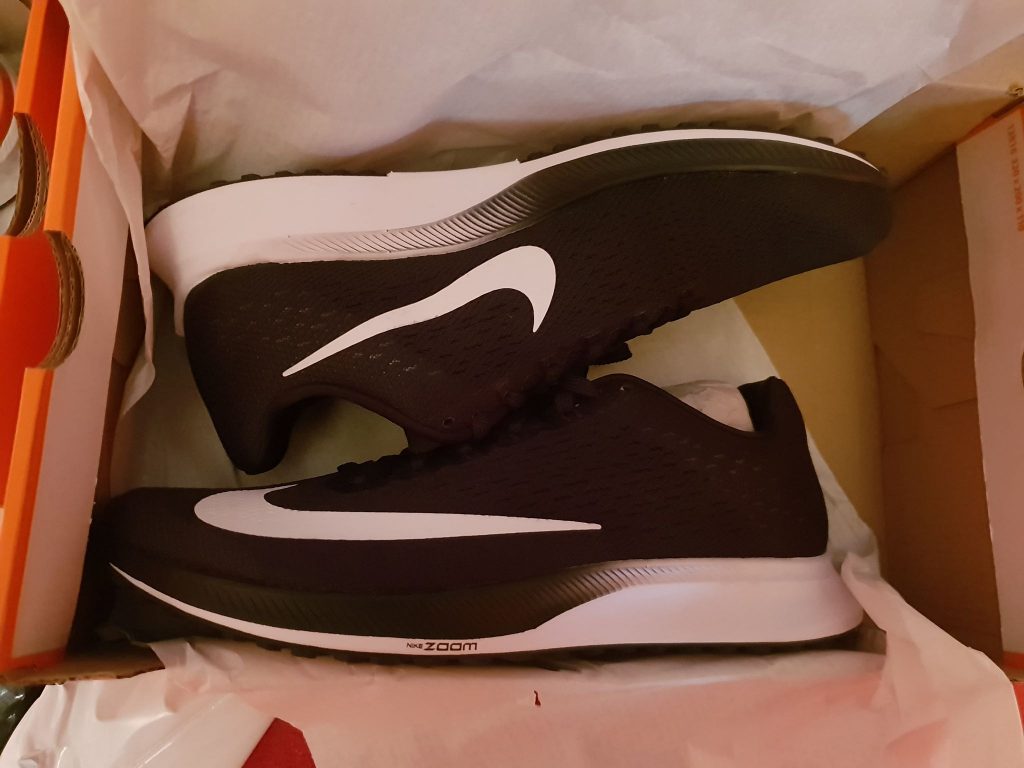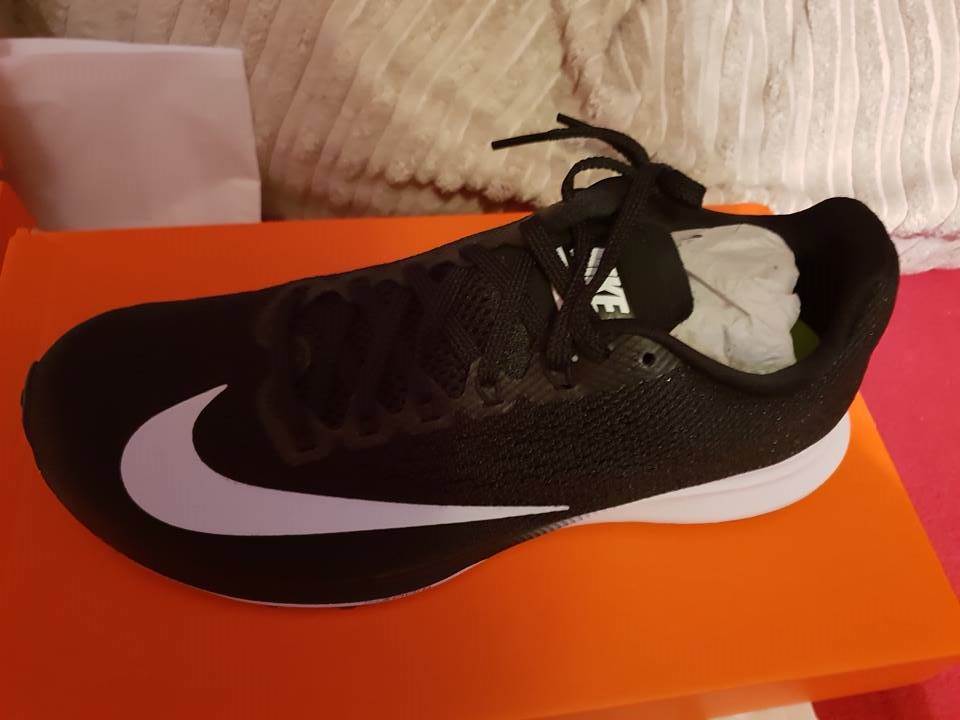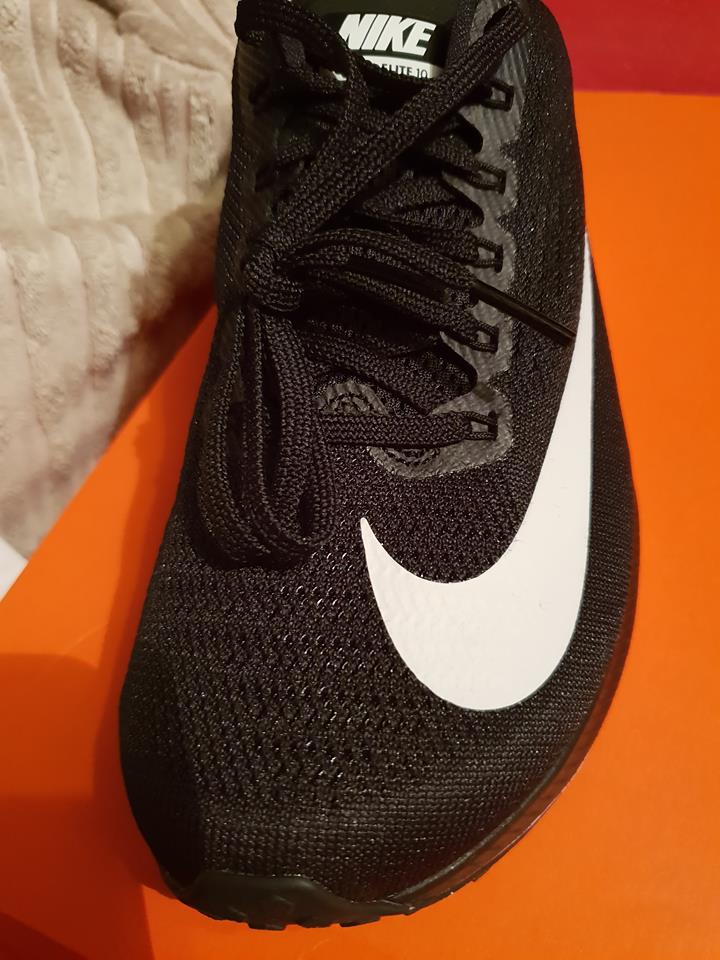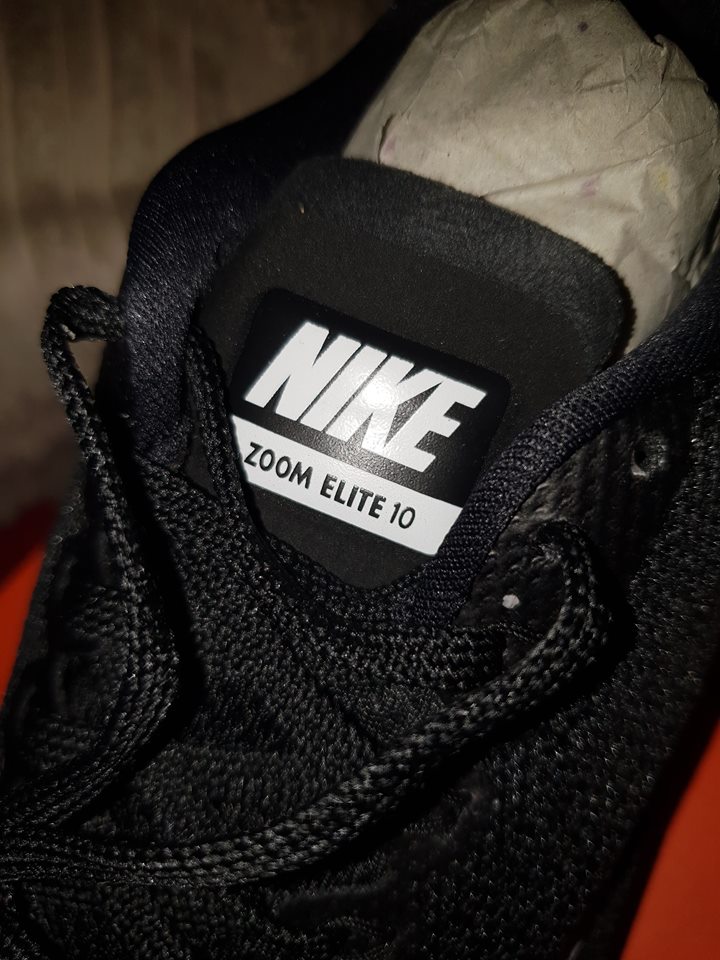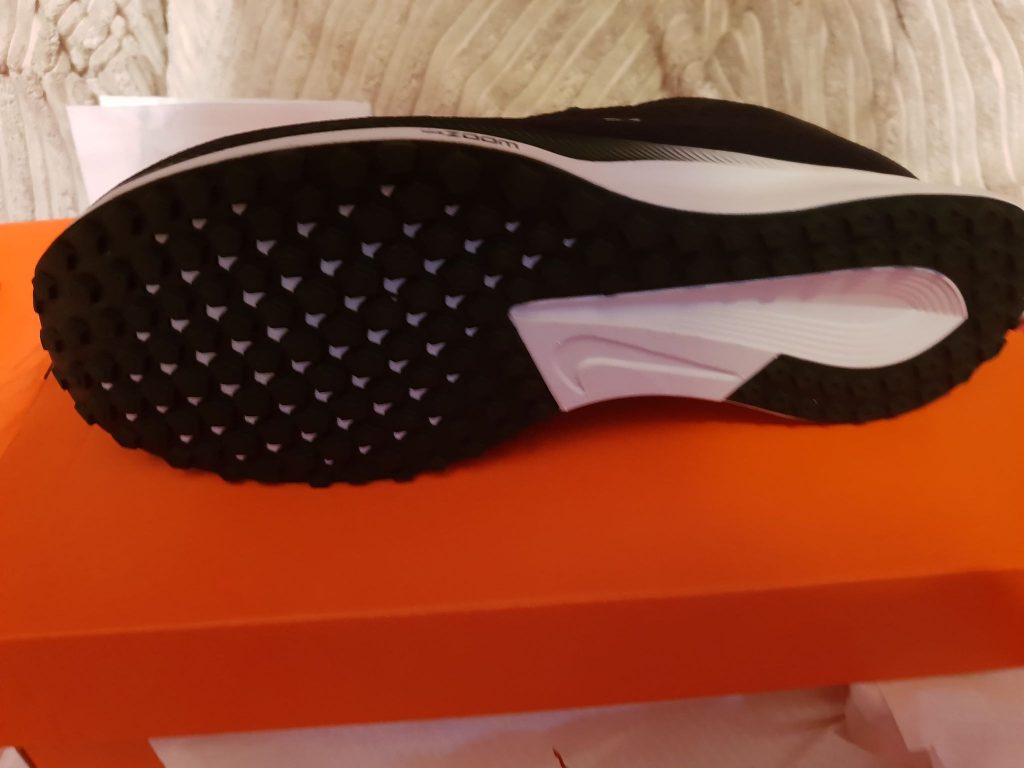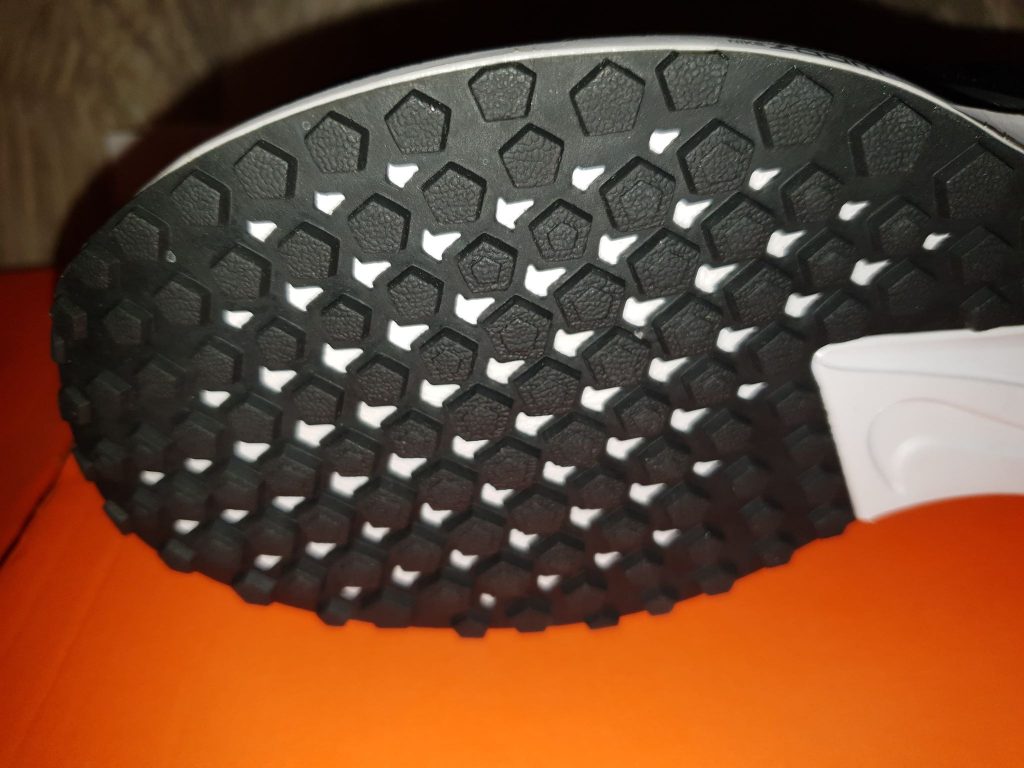Introduction:
My Nike Zoom Elite 8s have gotten me through 680 miles (540 in one pair and 140 in another). In fact, the higher mileage pair were also purchased second-hand so had covered miles elsewhere too. Nevertheless, they still served me well!
Now that it is time to rotate out my well-loved pair of Elite 8, I was looking for another pair of lightweight but cushioned racing shoes. Previously I had been using my Elite 8s as my treadmill shoes and my less worn pair as 5-10k race day shoes. I did some research and torn between the Elite 10 and the Adidas Boston. After some more reading, it seemed that a lot of people commented on the lack of forefoot cushioning in the Boston’s. Most of the cushioning is located in the heel. With me being a forefoot striker, this would’t offer me enough cushioning. I decided that as I had experienced no issues with the Elite 8, I would replace them with the newest model.
I managed to get a pair of Elite 10’s for £54 from SportsShoes.com (plus cashback from Quidco and a 10% student discount).
First Impressions:
The Zoom Elite 10 look longer than the Elite 8 model that I had previously. I’m not sure if this is just down to the colour differences as I am yet to measure them. They are, however, lighter than my previous model. Despite being lighter, they feel softer on the insole, but not squidgy.
I wanted the red and black pair, but they only had these in size 11+, so instead I went with the black and white pair as I didn’t fancy the blue. In my opinion, the shoes look fast! There is a large white Nike tick on the front of the shoe which continues down the outside.
I like the flyknit upper as it makes my foot feel like it is a part of the shoe. It encompasses the foot completely and feels snug. I’m not sure if it’s because they haven’t been broken in yet, but the height of the toe box feels narrower than the Elite 8. I can feel the roof of the toe box against my toes.
Just like other Nike shoes, there isn’t much in terms of reflectivity. There is also no “Shield” model available which often adds more reflectivity and weather proofing.
Sizing:
My last few runs in the Pegasus 34 saw me getting blisters on my big toes now that I am starting to get faster. As such, I decided to go up half a size larger than normal to a 6.5 to give myself more room in the toe box area.
Running:
I haven’t really been able to put them through their paces when compared with the mileage of my Elite 8s! I also didn’t really have high hopes for the Nike Zoom Elite 10… after all, they had big shoes (pardon the pun!) to fill. With this being said, my first outing with them was the New Year’s Day Parkrun at West Park. On Christmas Day, I had achieved a personal best of 28:37 in the Nike Zoom Elite 8. New Year’s Day brought me a new personal best of 27:22!
The first thing I noted was how “grippy” they felt. I can’t recall how my pair of Elite 8 felt when they were new to compare though. It was easy to forget that I had trainers on as they felt light but still comfortable and supportive. I didn’t experience any rubbing or discomfort, despite forgetting to put nylon socks on and thus running in a standard cotton pair. My feet felt well ventilated during the run, with no hot-spots or sweating.
The running experience actually took me by surprise. I knew what to expect of the Elite 8, they were firm but responsive. They performed at their best when used for 5-10k races or speed work. The Nike Zoom Elite 10, however, still feels responsive but with a softer, more cushioned feeling underfoot. They feel fast and fun to run in, but yet more protective than the Elite 8. Previously I wouldn’t have fancied running 10 miles outside in the Elite 8 as I start to require more cushioning. As the cushioning has been increased (despite the shoe weighing less), 10 miles may now be comfortable for me in the newer model.
Within a few runs of purchasing the Elite 8, the lugs on the outsole were starting wear away. This did concern me and I worried about the durability. In the end, this didn’t turn out to be an issue as I got over 540 miles out of them. With that being said, it is nice to see that the lugs on the Nike Zoom Elite 10 appear to be more durable. If I get 500 miles out of them, I’ll be happy!
Distances:
As mentioned above, I found the Elite 8 to lack cushioning for longer distances. With that being said, the Nike Zoom Elite 10 offer more cushioning. Depending on your preferences, they could be suitable for up to half marathon distance. Quicker runners may be able to run a full marathon in them, however I start to need more cushioning on 10+ mile runs.
Pace:
The Nike Zoom Elite 10 is marketed as a more cushioned race shoe when compared to the Nike Streak 6 or LT models. With that being said, it can still hold its own when running at a steadier pace. The thing that puts me off the lightweight racer models is the fact that I need more forefoot cushioning. The Nike Zoom Elite 10 are great when running fast (for me, fast is 8-9 minute miles) but are cushioned enough to handle slower mileage.
For comparison, I used to wear the Nike Zoom Elite 8 when I first started running. At this point I was only capable of 15-16 minute miles. I wore them through my running journey as I progressed into 8-9 minute miles. Even then I still relied on them for my slow (12 minute miles) treadmill runs or steady Parkruns (11:30 minute miles). The Nike Zoom Elite 10 feels more cushioned so they actually feel better than the Elite 8 when running at the slower end of the spectrum.
Rotation:
The Nike Zoom Elite 10 fit into my rotation perfectly. I have switched my pair of race day Elite 8s to my treadmill shoes and now use the Elite 10 as my 5 and 10k race shoes. If I ever enter another 10 mile race, I may opt for the Elite 10 there too.
At the time of writing, my rotation was as follows:
- Nike Pegasus 35 – easy paced runs on the road, medium tempo runs, half marathon and marathon events
- Nike Odyssey React – may take over from the Pegasus 35 for half marathon and marathon distances and then leave the 35s as a training shoe
- Nike Zoom Elite 8 – treadmill, speed work (intervals and tempo runs)
- Nike Zoom Elite 10 – 5k and 10k events
- Nike Vomero 12 – long distance slow runs, trail runs, recovery runs after a tough session if running outside and feel I need more protection
- Adidas Galaxy Trail – trail runs
- Nike Revolution 3 – cross-training
- Nike Pegasus 34 – walking
Conclusion:
Overall, I like the design of the Nike Zoom Elite 10. I do wish there was a wider array of colours available though. The black and white version looks fast, but are rather plain. I prefer more flamboyant race shoe colours!
Despite the height of the toe box feeling a bit less spacious than the Elite 8, I experienced no discomfort during my 5k race. The flyknit upper helps to wrap the shoe around your foot. This creates a secure and locked down feeling. I felt confident in the shoes ability to keep my foot protected.
I’m surprised by the fact that the Elite 10 weighs less than the Elite 8, but feels softer on the insole. The Elite 8 felt firmer underfoot, which often bothered me on races longer than a 10k. So far I have experienced no issues with the Nike Zoom Elite 10. I even managed to take 75 seconds off of my 5k personal best.
The lack of reflective elements on the Nike Zoom Elite 10 isn’t a big issue for me as I use them for racing so never on the evenings or at night.
For me, the only downside of the shoe comes from Nike and not the model itself. Due to the release of the Zoom Fly and Pegasus Turbo, it looks as though the Elite range will be discontinued. Nike seem to have a lot of lightweight racers in it’s arsenal, including the Streak 6 and LT. This is a real shame as they are a great shoe at an even better price point. I would like to try the Pegasus 35 Turbo but they are expensive. I have read that the Zoom Fly only really work if you are a speedier runner. Hopefully Nike see that there is still a need for the Elite range, otherwise I will be looking for another race day shoe option in the future.
I was nervous about retiring my main pair of Elite 8 as they have served me well. So far I feel like the Elite 10 is a perfect upgrade for me. I like the more cushioned forefoot and the lighter weight of the shoe. However some people may prefer the firmer feel of the Elite 8. I look forward to racing more with the Nike Zoom Elite 10 to see how they hold up.

Photos:
